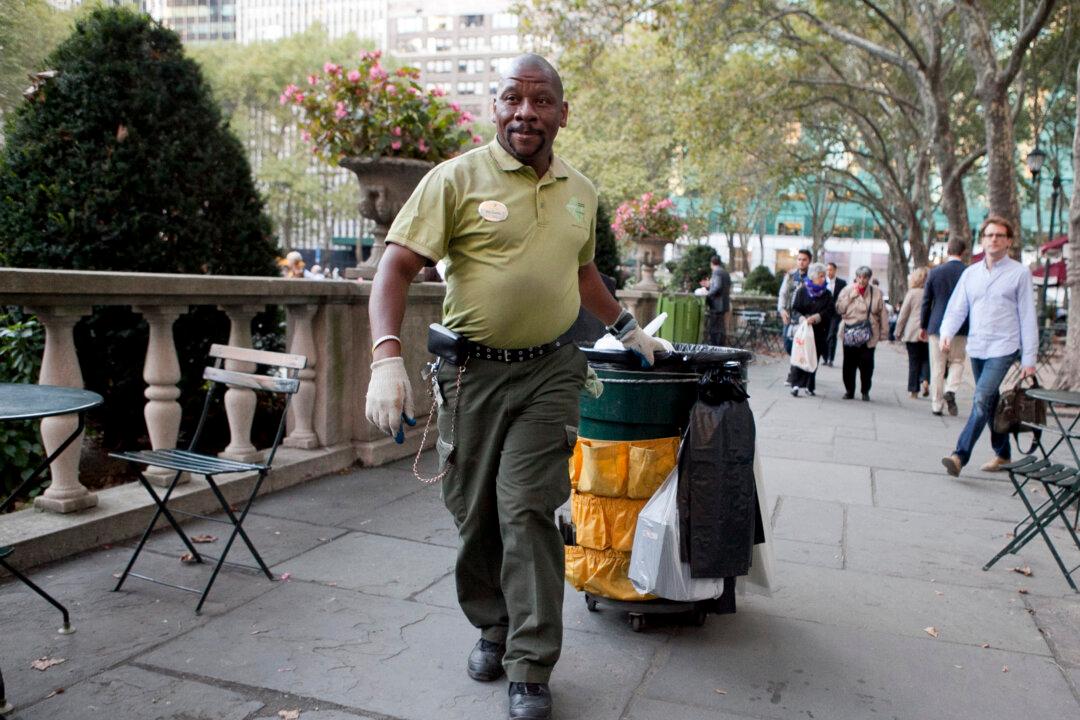NEW YORK—Council members raised questions today to the Parks Department about whether it could anticipate private donations and give the city an opportunity to reduce public funding for parks.
Parks and Recreation Commissioner Veronica M. White firmly declined, indicating she could not predict what the philanthropic donations would be in a given year. She also emphasized the money is “critical” to parks operations.
During the financial downturn, The New York Department of Parks and Recreation (DPR) saw its budget cut. Last year it was up to a record high of $380 million, but it is still not enough to cover costs.
Similar funding shortfalls during tough economic times in the 1970s led parks into severe disrepair due to neglect, leading to the emergence of agreements with nonprofit organizations that would maintain and offer programming in certain city parks.
Since then, these public-private partnerships—such as parks conservancies, alliances, funds, trusts, foundations, and “friends of” groups—have grown in size and stature. Last year they raised $76 million.
Ten years ago, Prospect Park in Brooklyn received 60 percent of its funding from the city. Currently, funding has been reduced to just 40 percent.
Conservancies use donations for landscape maintenance, replacement of dead trees and plants, graffiti removal, repairing benches and monuments, and more. Conservancies are also among the efforts that help generate critical volunteer service, which keep the parks maintained and running smoothly.
Conservancies and hundreds of informal community-parks partnerships must obtain DPR approval for capital spending, concessions on parkland, and new permits. Some have formal agreements with DPR, and some do not, according to White.
“I need the conservancies to help me keep the parks as nice as they look,” said White, testifying before the Committee on Parks and Recreation Sept. 17.
As part of its effort to reassess the benefit of conservancies to the city, some council members now say they want more transparency and information about how much money is being raised.
“I think the situation we’re in poses as many risks as opportunities,” said Council member Brad Lander, who repeatedly told White that a greater degree of transparency is necessary.
If the value of expected conservancy contributions were given to the city during the budget process, it might be possible for the city to allocate funds elsewhere or to other parks, suggested Lander and others.
In the case of Central Park, which is the recipient of the largest portion of private donations of any park in the city, White warned against leaning too heavily on private funding, even if the support for it is there.
“I think it’s important to continue to put taxpayer money into Central Park so it’s always a public-private partnership and not [only] private.”
During Bloomberg’s administration, 750 acres of parkland has been added with $3.9 billion in capital funding invested in new and renovated parks. Large destination parks, such as the High Line, Hudson Park, Brooklyn Bridge Park, and Governors Island have been built, many with conservancies operating them.
A policy briefing offered by the Committee on Parks and Recreation raised concerns about the wide discrepancy in donations for various parks. In 2012 Central Park attracted $100 million, and the High Line received $20 million, while Flushing Meadows Corona Park in Queens attracted only $5,000.




